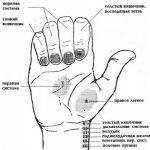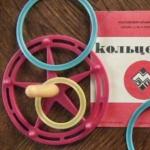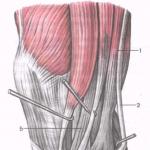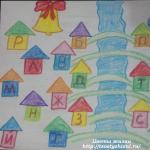How to determine the word voiced consonants. Consonant sounds in Russian
Today, almost all children know the letters and the alphabet in early childhood. However, it is recommended to learn letters without naming letters as they sound in the alphabet. Letters must be taught with sounds. Speaking of the letter "B", you must call it [b], and not "BE". This is necessary in order to make it easier for the child to later combine letters into syllables and words.
However, the world of sounds is not limited to this. And when the baby grows up, he has to master such concepts as vowels, hard, soft, paired, deaf and voiced consonants. I invite you to talk today about such different sounds. We will talk about this in a fabulous form, in the form closest to children's perception. I invite you to phonetic tale . This is an augmented version of the tale of sounds presented in.
So, friendly letters live in a hospitable. And the sounds created a great Kingdom, called Phonetics.
Kingdom of Sounds - Phonetics
In the kingdom of sounds of the Russian language, phonetics lived together - they lived vowels and consonants sounds. Each sound had its own house. The vowel sounds of the houses were painted red, and the consonants in blue. But the roofs of all the houses were white and changed on their own when the sounds went to visit each other.
Total kingdom 42 inhabitants: 6 vowels [a], [e], [o], [y], [u], [s] and 36 consonants. They lived together and often visited each other. And every time they visited each other, magic happened: as soon as they held hands, new sounds for new words were obtained.
Vowel sounds loved to sing. Therefore, in their houses always sounded music. But consonant sounds did not work at all. But they were very pliable and always and in everything "agreed" with vowels. At the same time they could become hard or soft . Here, for example, the sound [n]. In a word "saw" It sounds soft, but in the word "dust" - firmly. And all because the sound [and] softened [n], and the sound [s] on the contrary gave hardness.
This is how consonant sounds, when holding hands with vowels, become soft or hard at their request.
However, there were in the kingdom and "naughty" sounds. And although they lived in blue houses and were called consonants, they did not want to change. And this happened on the day when idle while sitting on the benches, they argued who was more important: vowels or consonants. And sounds [OK],[w] and [c] decided to become independent and not to obey anyone, especially vowel sounds. They proclaimed themselves hard sounds that would never become soft under any circumstances! And as proof of their solid decision, they painted the white roofs of their houses in dark blue.
But compliant and non-conflicting sounds [u],[st] and [h] They were very upset and frightened that the balance of the ratio of sounds would be upset in the kingdom and decided to remain soft forever. And so that all the inhabitants of Phonetics know about this, they painted the roofs of their houses in green.
However, soon 2 more inhabitants appeared in the kingdom of Phonetics - soft and hard signs. But they did not violate the unity of the sound world. The soft sign helped the consonants to become soft, and the hard one - hard. They built themselves white houses and all healed peacefully and in harmony.
But not only residents of the Kingdom of Phonetics were famous for their hard and soft characters. Many of them had and have their own particular preferences. Some sounds loved the noise of leaf fall, while others like the sound of rain. They even built separate quarters for themselves, so that in one - the bell is always loudly beating, and in the other - like under the dome - it is dull and noisy ... So voiced and deaf consonants . And between the quarters the river flows.
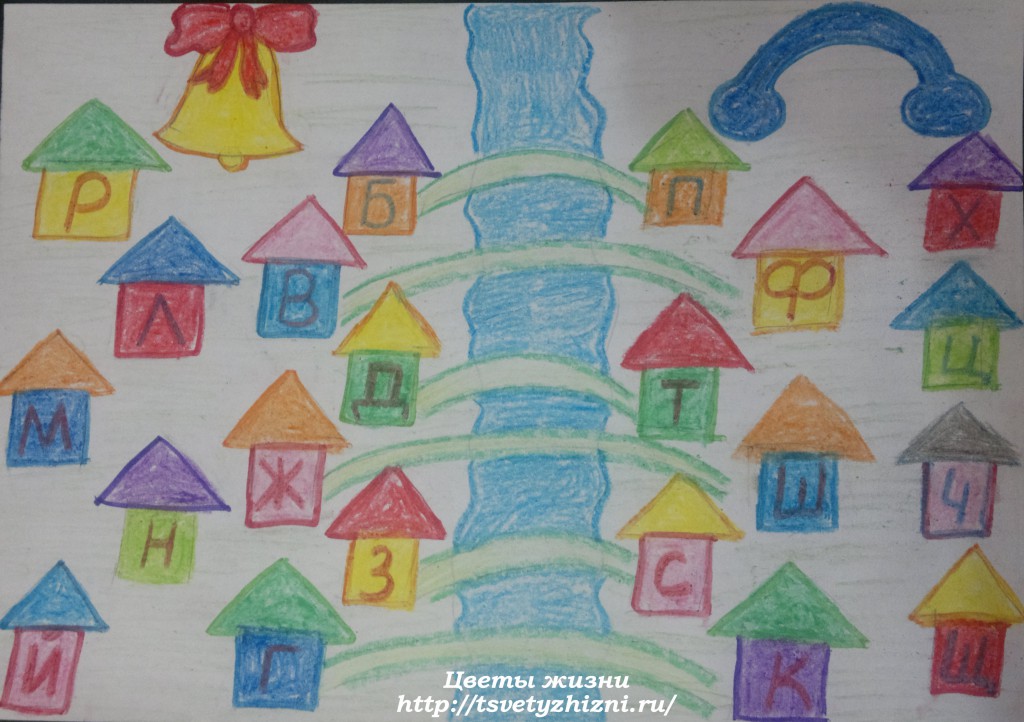
So in the quarter with a bell the sounds [p], [l], [m], [n], [j], [b], [g], [v], [e], [g], [g] . And in a quiet quarter - [p], [f], [t], [ш], [с], [к], [х], [ц], [ч], [щ]. And some letters became so friendly that they connected their houses with bridges. So there is a bridge between the sounds of fb, fb, md, w, wc, and cg. it paired consonants .
This is how the amazing Kingdom of Phonetics lives. Sounds go to each other for a visit, change, adjust, make noise, shout, sing ... Have fun with them. And in this fun words are born, of which the sentences that make up our speech. By the way, it happens ... And by the way, let's talk about it another time.
How to learn soft and hard consonants
These are the complicated relationships between sounds. To make it easier for the son to draw phonetic patterns of words, we made very comfortable clouds with him. According to them, it is very easy to determine the hardness or softness of consonants.
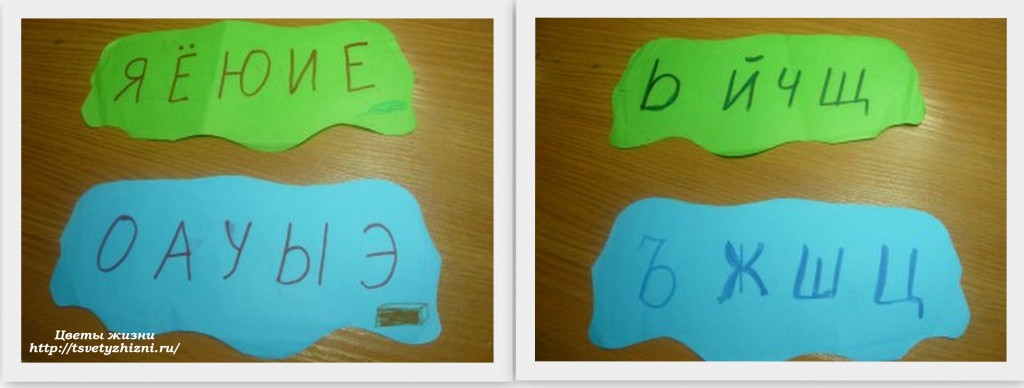
About how with the help of clouds we taught hard and soft consonants to read in.
How to distinguish between voiced and deaf consonants
A very simple method helped us to make the difference between voiced and deaf consonants easier for the child. Calling the sound, hold your hand to your neck. If the sound is ringing, then there is a vibration (trembling) of the vocal cords. If the sound is deaf - there will be no vibration.
For the same purpose, we used the picture with houses and bridges over the river, which you saw above.
Enjoy your acquaintance with the world of phonetics!
Meanwhile, we ship our phonetic tale for the contest “Mom, prepare me for school” for Lyudmila - the owner of the hospitable blog “Rivivashka”. The competition was supported by wonderful sponsors: the hundreds of favorite “Two Hands”, the stunning world of magnetic designers “Magformers”, the company “Wabafun” supplier of magic kinetic sand, the most generous publishing house “Mann, Ivanov and Ferber”, the author of wonderful grandmother's fairy tales Tatyana Petukhova.
All the best!

Usually, understanding the difference between vowels and consonants in children does not cause serious difficulties. But on the hard and soft consonants should dwell.
How to teach children to distinguish between hard and soft consonant sounds
The very first thing you need to teach a child: consonant sounds can be firm and soft, but not letters.
Typical error:
Children confuse sound and letter. Remember that the sound - it sounds, and the letter - is the icon, it is written. The letter can not be hard or soft, hard or soft in pronunciation can only be a consonant sound.
Sometimes children can easily learn to distinguish between soft and hard sounds.
But it happens that it is given with difficulty, and in this case, signs will come to help by which you can distinguish hard sounds from soft ones.
Distinctive signs of soft and hard sounds
What is the sound after a consonant:
- If after a consonant there is a vowel a, o, u, e, s, then the consonant is solid.
- If after the consonant there is a vowel and, e, w, I - then the consonant is soft.
Testing with examples:
In the words "mother", "hole" - the consonants are firm, because after them go "a" and "o".
In the words "fly", "nanny" - soft consonants, because after them are "e", "and", "I".
- If another consonant sounds after a consonant, then the first consonant will be a hard one.
- There are sounds that can only be hard, and sounds that can only be soft, no matter what sound is heard and which letter is written after them.
Always solid sounds - w, w, c.
Always soft - th, h, y.
A common way to learn these sounds is a simple technique: we write the letters that convey these sounds in a line, and emphasize the “d, h, u”. The underline symbolizes the pad on which soft sounds sit. The pad is soft, so the sounds are soft.
Soft sign and hard sign
- If the consonant is at the end of a word, and after it is the letter "ь", then the consonant is soft.
This rule is easy to apply if the child sees the written word, but it does not help if the child performs the task of hearing.
The movement of the tongue in the pronunciation of soft and hard sounds
When pronouncing a soft sound, the tongue moves forward slightly, approaching the palate (or touching it) with its middle.
When pronouncing hard sounds, the tongue does not move forward.
Table of signs of hard and soft sounds
Solid:
- Before a, o, u, u, s.
- At the end of the word before the consonant.
- W, C, W
Soft:
- Before the vowels e, e, and, u, i.
- If after the consonant there is a soft sign (dust, measles).
- H, h, y.
A picture or a list of thematic words is shown, and the task is given to choose words with soft or hard consonants. For example:
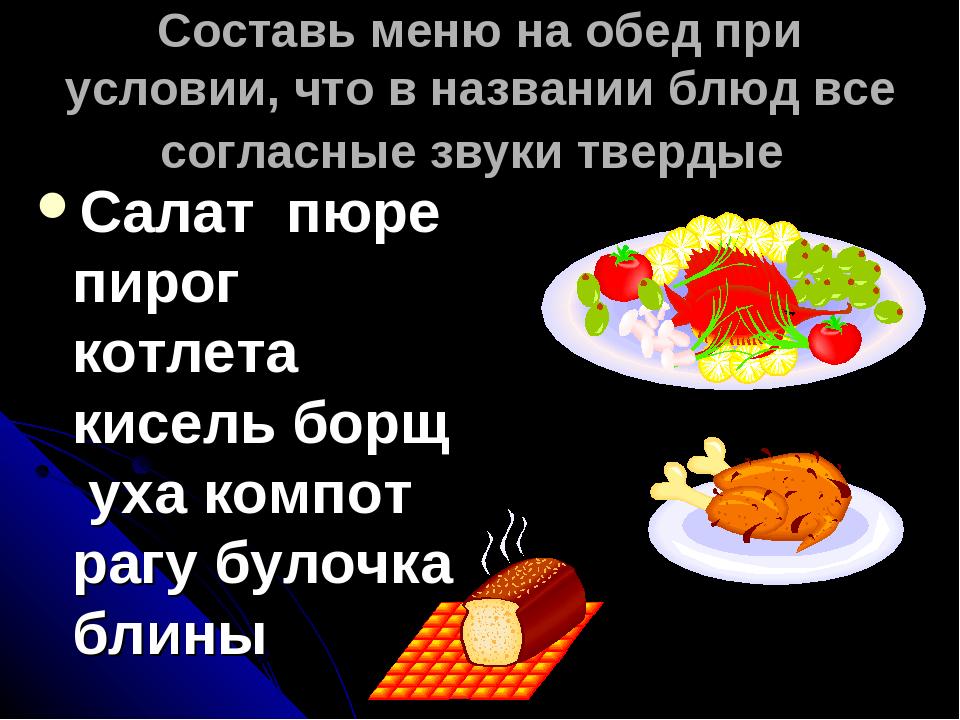
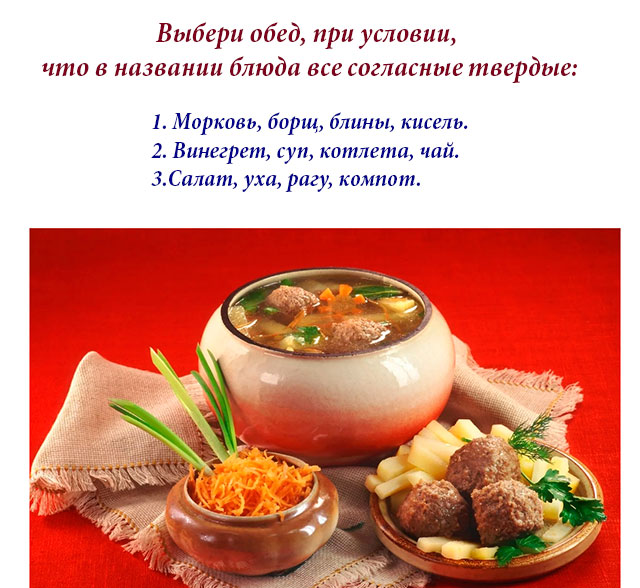
Voiced and deaf consonants
There are 11 pairs of voiced / deaf consonants in Russian.
The phonetic distinction between voiced and deaf consonants is in the tension of the vocal cords. Deaf sounds are made with the help of noise, without tension of the ligaments. Voiced sounds are pronounced by the voice, caused by the oscillation of the vocal cords, because the air noises from the larynx.
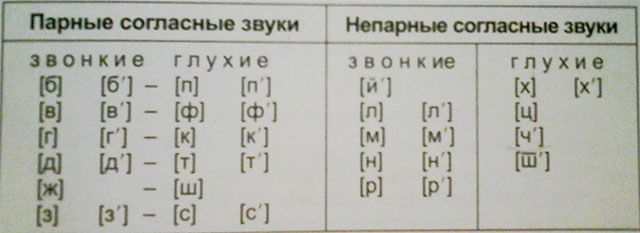
Mnemonic trick for memorizing deaf sounds:
Memorize the phrase: “Steppe, do you want a cheek? “Fie!” All consonant sounds here are deaf.
Examples of tasks for children
Tasks for training the differences of paired consonants can be made for each pair according to the following principle (for example, a pair of D / T):
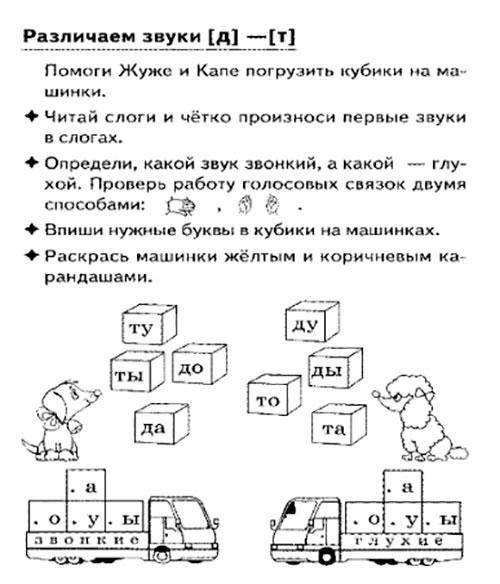
Assignments for the difference of a pair of consonants G / C
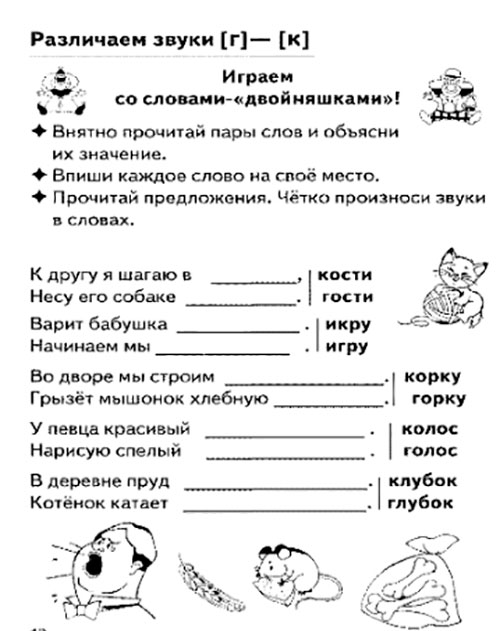
When pronouncing voiced consonants air flow creates vibrations of the vocal cords.If voice is not involved, the sound is considered deaf.
But a ringing letter does not always denote a ringing sound (and vice versa: the deaf consonant does not always denote a deaf sound). It depends on the position of the letter in the word.
Voiced often stunned at the end of the word. For example, in the word “colander” we read “k” at the end, because the sound is in a weak position. May also stun before the deaf consonant. For example, the word "gait" we pronounce as "plowed ka."
To determine which letter will be correctly written, the letter must be put in a single-root word in a strong position (that is, before or if the consonants are M, L, N, P).
For example: “boat” - “boat”, “mushroom” - “mushroom”.
Table
|
Paired |
Voiced |
Deaf |
| B | ||
| F | ||
| R | ||
| T | ||
| F | ||
| WITH | ||
|
Unpaired |
L, M, N, R, Y (sonorous) |
Also paired for deafness / voicing are pairs of soft consonants from those shown in the table. For example: “b’ - p ’”, “v’ - f ’”.
Hard and soft
In words, the same letter can mean both hard and soft sounds. This is due to the effect of subsequent consonants on softness / hardness. Before A, O, U, U, E, E sound solid consonants, in front of E, E, E, U, I - soft.
Table
|
Paired Before A, O, U, S, E - solid. Before I, E, E, Y, I - soft. |
Solid | Soft | ||
| b | b‘ | white | ||
| vase | at | at‘ | ||
|
g‘ |
||||
| d | d‘ | uncle | ||
| ash | s | s‘ | ||
| to | to‘ | brick | ||
| varnish | l | l‘ | ||
Consonants voiced and deaf. Stunning and voicing consonants
According to the sound and the way of formation, consonants are divided into voiced and deaf in Russian.
Voiced consonants are formed with the participation of the vocal cords and consist of voice and noise. Deaf consonants are formed without the participation of the vocal cords and consist only of noise.
Most consonants form pairs of deafness / voicing. Table:
| [b ’] - [p’] |
|
| [in ’] - [f’] |
|
| [g ’] - [k’] |
|
| [d ’] - [t’] |
|
| [з ’] - [с’] |
|
Some consonants do not form pairs for voicing / deafness (they are, so to speak, "only voiced" or "only deaf").
Unpaired deaf consonants: [x], [x ’], [u], [h’], [y ’’].
Unpaired voiced consonants: [y ’], [l], [l’], [m], [m ’], [n], [n’], [p], [p ’].
In the stream of speech in certain positions, paired voiced consonants change to deaf (stunned), and paired deaf - to voiced (voiced).
The voiced consonants are stunned in two positions:
- At the end of the word:
Bread - [hl’ep].
(Many) colors - [color].
2. Before the deaf consonant:
Claws - [kokt’i].
Spoon - [loshka].
Under the floor - [patfolam].
Deaf consonants are voiced at the position in front of the pair voiced:
Request - [proz’ba].
Hang up - [adboy "].
With a friend - [health].
Consonants are soft and hard. Mild hard consonants
According to the sound and the way of formation, consonants are divided into hard and soft in Russian.
Soft consonants are formed with the participation of the middle part of the tongue and have a special, “soft” sound. Solid consonants are formed without the participation of the middle part of the language and have a "solid" sound.
Most consonants form pairs of hardness / softness.
Some consonants do not form a pair of hardness / softness (they are, so to speak, "only hard" or "only soft").
Unpaired firm consonants: [ж], [ш], [ц].
Unpaired soft consonants: [y ’], [h’], [y ’’].
Hard consonants cannot be combined with the vowel sound [and] coming after them, soft consonants cannot be combined with the vowel sound [s] coming after them.
Man - [man] (here after a solid [s] sounds [s]).
He taught - [uchil] (here after the soft [h ’] it sounds [and]).
In some cases, paired solid consonants are softened in the stream of speech.
Hard [n] may change to soft [n ’] in combinations [n’ch’], [’щ” ’.
Pancake - pancake [bl’in’ch’ik].
Shift - changer [see’En’shch’ik].
Solid [d], [t], [s], [s], [n] can soften before soft [d ’], [t’], [’], [s’], [n ’].
Whistle - svi [s't ’] th.
Les - le [s "n"] uk.
Treasury - in ka [z "n"] e.
Bow - ba [n "t"] uk.
India - And [n "d"] iya.
Comparison of consonants in sound and in pronunciation, loss of consonants in difficult-to-pronounce combinations
In addition to softening, voicing and stunning in the stream of speech, consonant sounds are subject to certain positions and other changes. Note some of them.
Sounds [s], [s], [d], [t] before consonants [g], [m], [h "], [yi"] are likened to them in terms of sound and pronunciation.
Sew - [shshit ’].
Kindle - [rajzhech ’].
The account is [shchstv].
He became generous - ra [sch] t ed.
Clean up - [pac’ch’is’t’it ’].
With a beetle - [zhukom].
Wool - [Ishscher "t" and].
In the verbs to be found, the sounds of [t ’] and [c’], being mutually similar in pronunciation, coincide in a double sound [tzts].
Burst - [rvatstsa].
Fits - [gad’itstsa].
In the combination of TSC, the sounds [t] and [s], mutually similar in pronunciation, coincide in the sound [c].
Arbat - [arback’iy "].
Pirate - [p’iratsk'ii "].
With a difficult-to-pronounce combination of consonants, one of them may fall out.
Overbearing - sv [s].
Heart - ce [rts] e.
Late - on [zn] about.
Sun - so [nc] e.
Envious - dependency [with "l"] willow.
Sense - Chu [STV] about.
Six hundred - above [ss] from.
Dutch - Golla [ns] cue.
Vowels percussion and unstressed. Reduction of unstressed vowels
According to the features of pronunciation, duration and strength of sound, vowel sounds are divided into percussive and unstressed.
Percussive vowels in the Russian language have a much longer duration and strength of sound than unstressed ones. Shock vowels are characterized by a clearer pronunciation than unstressed.
The stressed vowels form the stressed syllables in speech, the unstressed vowels - unstressed syllables.
In an unstressed position, vowels are pronounced less clearly and sound with a shorter duration (i.e. reduced).
Vowels [and], []], [без] without emphasis in general retain their sound.
Saw - [p’ila].
Smoke - [smoke].
Hand - [hand].
Vowels [o], [e], [a] without accent change the quality of their sound.
After hard consonants, unstressed [o] and [a] coincide in a short vowel sound that is close but not identical [a] (in the school phonetics course there is no special icon for this sound, the symbol [a] is used).
Head - [head].
Words - [fame].
After soft consonants, unstressed [e] and [a] coincide in a short vowel sound that is close but not identical [and] (there is no special icon in the school phonetics course for this sound, the symbol [and] is used).
Cases - [d’ila].
Pyatak - [p’itak].
The double role of the letters E, E, Yu, I in the Russian graphics
Letters ey, y, i play a double role in the Russian graphics.
Letters ey, y, i designate two sounds at once, if they are at the beginning of a word, either after the separating b and b, or after the vowel sound: [y'e], [y'o], [y'y], [y'a].
There is - [y'es "t"] (letter e indicates two sounds at the beginning of a word).
Spill - [pral "d" ot] (letter yo indicates two sounds after b).
Comfort - [yu’ut] (letter yu indicates two sounds after the vowel).
The letters e, e, u, i, after soft consonants, denote only the vowels [e], [o], [y], [a] and the softness of the previous consonant.
Forest - [l’es].
Honey - [m'ot].
Luke - [l’uk].
The row is [r’at].
Human speech is made up of a set of consecutive sounds. They are divided into two main groups - consonants and vowels - according to the principle of articulation. Consonant sounds are sounds that, when pronounced, a jet of air exhaled by the lungs encounters possible obstacles in the mouth in its path — this may be the tongue, and the teeth, and the palate, and the lips. This explains the occurrence of consonants. Some consonants, while forming, involve, while others do not. So, in the Russian language are deaf and voiced consonants. If a consonant is formed only with the help of noise, then it will be deaf. And if both noise and voice are involved in his education to varying degrees, this consonant is called voiced. We can easily notice the difference in the pair of "deaf and voiced consonants" if we put our hand to the larynx. If we call voiced consonants, trembling is felt, vibration of the vocal cords. Since the ligaments are strained, the air exhaled by the lungs causes them to oscillate, sets in motion. And if you pronounce a deaf sound, then the ligaments will be in a calm, unstressed state, which is why some kind of noise is formed. In addition, if voiced consonants are pronounced, our speech organs experience somewhat less stress than when uttering deaf sounds.

Some consonants - voiced and deaf - form so-called pairs. Such sounds are called paired voiced and deaf consonants. In order to facilitate the memorization of the deaf consonants as much as possible, a special phrase-formula (mnemonic rule) is used: "Steppe, do you want a cheek? Fuii!" This sentence contains all deaf consonants.
And some of the sounds do not have a pair on the principle of deaf and voiced consonants. These include:
[l], [m], [n], [p], [nd] [l "], [m"], [n "], [p"] - voiced
[q], [x], [w: "] [h], [x"] - deaf
In addition, the following sounds [u], [h], [br], [g] are called hissing, and [p], [m], [n], [l] - sonorous. They are close to and can form syllables.
The first row consists of consonants, called sonorous, which translates from Greek as "sonorous." That is, when they are formed over the noise dominates the voice. And the second row of consonants, on the contrary, has dominated noise.

One of the principles of modern Russian orthoepy (a section of phonetics that studies the norms of literary pronunciation) is that voiced consonants take the form of the deaf, and the deaf are compared as voiced when Voiced consonant sounds (except for sonorous) are pronounced as deaf at the end of a word or immediately before another thud: code - ko [t]. And deaf consonants acquire a sign of voicing, if they are in front of a resonant consonant sound and begin to be pronounced resonantly: threshing [young'ba], to surrender - [3] to give. Only before the consonant [in], as well as before the sonoric, the deaf do not become voiced.
Deaf and voiced consonants create us certain difficulties in writing. In accordance with the morphological principle of spelling of our language, neither stunning nor voicing can be expressed when writing. So, in order to check paired voiced or deaf consonants, standing in the middle of a word or at the end in front of another consonant, you need to select such or change a word so that after a consonant sound there is a vowel: lo [w] ka - little bit, gra [[ t] - hail, losh [t] ka - horses.

